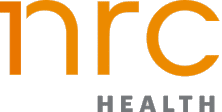I admit that this headline is fiction, not fact. However, I strongly believe that health literacy must be part of the K-12 curriculum in all schools, in the US and globally. Here’s why I hold that belief, and an outline for how we can make it happen.
The current mental map of the health care system that the average person has is that health care is something that happens “over there, to sick people, but not to me, because I’m not sick.” Then, when they do get sick, they’re flung against the health care delivery system—what I call the medical-industrial complex—while sick and/or in pain, which isn’t a recipe for quick uptake on a steep learning curve. People arrive at the doors of the medical-industrial complex with little understanding of how to successfully interact with that system. And, speaking of systems, most people also don’t have a firm grasp on how the system in their own body works.
Enter my proposition for K-12 health literacy embedded in the curriculum. Here’s an opportunity to empower people to fully participate in their health, their health care, and living their lives to the fullest. Kids are inherently curious about their bodies and how they work. I’d be willing to bet that every single person reading this has at least one memory of “playing doctor” as a kid. How much more fun—and powerful/empowering—would it be for kids in kindergarten to start learning biology using their own bodies as textbooks? There are apps for this, including Tinybop’s The Human Body, that could be deployed throughout the primary school years.
If a child learns how her body works, starting in kindergarten, she’ll be more likely to let her mom know if something isn’t right—unlike me. When I was eight years old, I almost wound up with rheumatic fever when I didn’t tell my mom about a sore throat for ten days. Strep throat can kill you, if you ignore it. I almost learned that the hard way. A kid who’s got the right information about how the body works will be more likely to interact with his pediatrician during clinic visits, opening communication channels that not only can build his knowledge but can also make him a powerful health self-advocate—an e(mpowered)-patient—throughout his life.
If a child has a chronic condition, like asthma or Type 1 diabetes, learning about lung function and metabolic function as young as possible can be life-extending. Including those two topics would also help kids without chronic conditions understand how their lungs and metabolism work. It’s also a great way to develop empathy and understanding about why one of your friends has to look at a glucometer frequently or carry an inhaler and an Epi-pen all the time. This approach would mean we’d be putting more humanity out into the world, in addition to science knowledge.
As kids rise into middle school and high school, adding health literacy content to math and science curricula would open the door to projects where kids could figure out “self-hacks”—how to increase exercise endurance, why hydration is important, the science behind food and cooking (and how that interacts with human health). The list is almost endless. Using tools like TheNNT.com in high school math and science classes could help teach kids about statistics, risk calculations and how medical science evolves. Add sites like Health News Review to social studies curricula, and you’ve got a recipe for creating critical thinkers that would be hard to beat.
Social media has a place in the high school e-patient-building curriculum, too. Using news stories from sports, pop culture and politics, students could dig into how body image impacts health, cultural norms that either encourage or inhibit healthy living, and how to talk about tough topics like drugs, drinking, tobacco, and sexuality with their parents and their peers.
For those of you saying “But there’s already too much in the curriculum. There’s no room for this stuff,” I hear you, but I don’t buy that argument. I spoke to Eva Colen, an education advocacy fellow whose expertise is in policy and system design, about adding health literacy to the K-12 curriculum. She said, “Financial literacy is already making its way into high school graduation requirements. I see this as part of a key life skills syllabus that includes financial literacy, civics, and health systems literacy. It’s the job of the education system to make sure baby humans get the knowledge they need to become functioning members of society. Navigating social systems, like the health care system, is a critical life skill.”
In health care, personalized medicine is becoming an expectation. Eva told me that personalized learning is the hot new thing in education circles, with programs like Education Reimagined mirroring in education the goals for patient-empowered health care envisioned by the Society for Participatory Medicine. What if we accelerated the full adoption of both by embedding health and health system literacy into K-12 curricula across America? I think this is a public conversation worth having.




